The European Parliament
MEPs (members of the European Parliament) are directly elected by the citizens of Europe and they represent the interests of EU citizens at European level. The role of the European Parliament in the EU legislative and policy-making process is one of the EU’s strongest claims to democratic accountability.
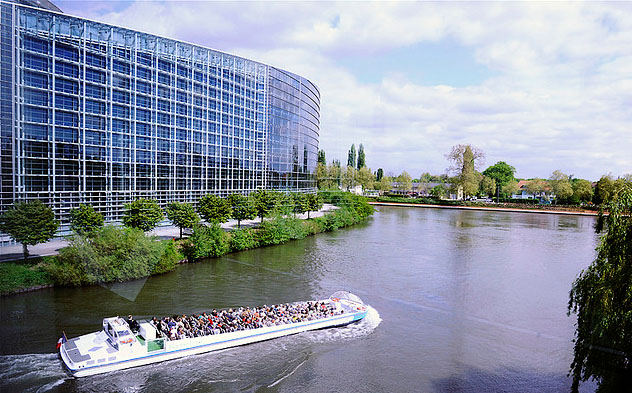 Outside the European Parliament building in Strasbourg, France.
Outside the European Parliament building in Strasbourg, France. Inside the European Parliament building in Strasbourg, France.
Inside the European Parliament building in Strasbourg, France.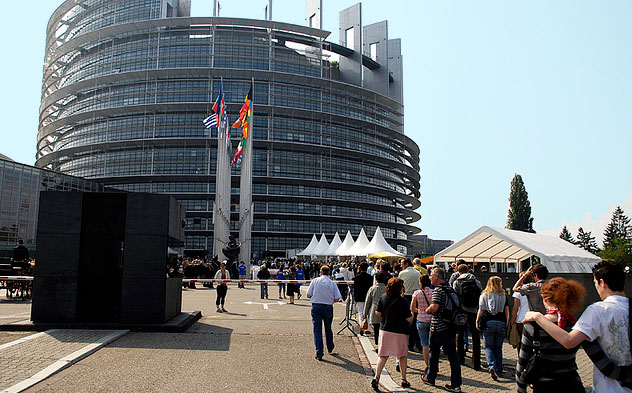 Visiting the European Parliament building in Strasbourg, France.
Visiting the European Parliament building in Strasbourg, France.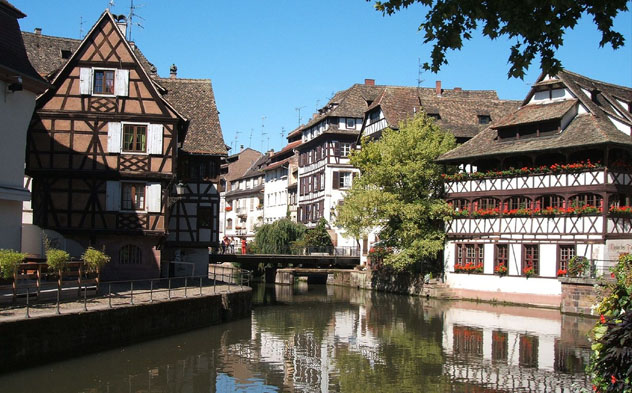 Medieval city of Strasbourg, France, where the European Parliament meet.
Medieval city of Strasbourg, France, where the European Parliament meet.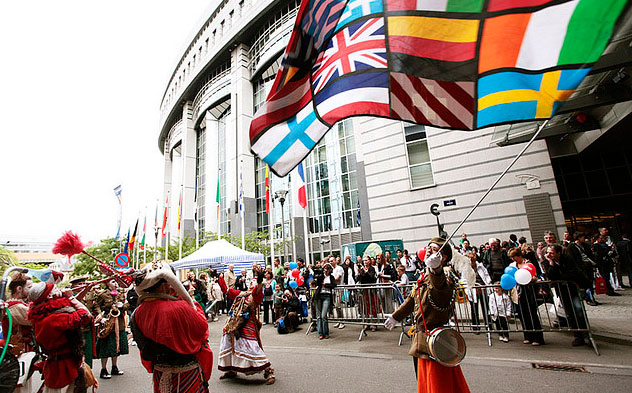 Open day at the European Parliament’s meeting place in Brussels.
Open day at the European Parliament’s meeting place in Brussels. The European Parliament also meet in Luxembourg.
The European Parliament also meet in Luxembourg.
Read this article about the most recent 2014 European elections to find out more about the parliament.
In this section, you will learn about the transformation of the European Parliament and how the Parliament was given new powers. We will discuss why MEPs must travel between Brussels and Strasbourg and you will find out about the historical reasons for this.
We will also discuss the functions of the European Parliament and emphasise its legislative powers. You will find out how the Parliament can influence the drafting of law proposals and what its role in the ordinary legislative procedure is.
You will learn about the composition of the Parliament, the MEPs, political groups and the President of the European Parliament.
Finally, we will discuss what type of institution the Parliament is becoming and how the problem of democratic deficit might be resolved.
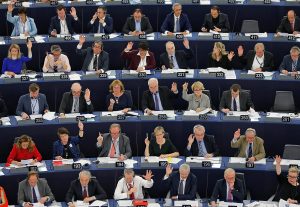
Members of the European Parliament take part in a voting session at the European Parliament in Strasbourg, France, November 22, 2016. REUTERS/Vincent Kessler
Members of the European Parliament.
The European Parliament has transformed dramatically since its creation in 1951. From a Common Assembly added to the ECSC institutions to meet the accountability criteria, today it is the only European Union institution that is directly elected by the citizens of the 28 Member States (Corbett, Peterson & Bomberg, 2012, p.63).
Since the Lisbon Treaty, it has equal powers with the Council of Ministers in decision-making. The Parliament has power over the Commission as it elects its President and can dismiss the Commission as a whole (Corbett, Peterson & Bomberg, 2012, p.62). Nevertheless, it lacks two typical powers of the national parliaments: it cannot initiate legislation and does not have powers over taxation (McCormick, 2011 B, p.203).
Today, the European Parliament portrays itself as the voice of its citizens. Watch how this video depicts this argument.
http://www.youtube.com/watch?v=IpotSpz8t-w
In the following section, we will discuss why, despite its increased powers, critics still question its ability to bring legitimacy to the EU decision-making process.
What does an MEP do?
Watch this video about Irish MEP Proinsias de Rossa. Think about who he represents at the European level, who is his constituency? What does he say are the main roles of the Parliament
https://youtu.be/lrM_IrAucX4
We have just looked at the composition of the European Parliament and we are aware of the important role it plays in representing EU citizens. Now have a look at the EU website to find out more about the what the EP does.
Remember: As you read, the text think about some of the issues we mentioned earlier:
- What does the text say the EP does?
- What are its three main roles?
- What are its relationships with the other Institutions?
Calendar
| M | T | W | T | F | S | S |
|---|---|---|---|---|---|---|
| 1 | 2 | 3 | 4 | 5 | 6 | 7 |
| 8 | 9 | 10 | 11 | 12 | 13 | 14 |
| 15 | 16 | 17 | 18 | 19 | 20 | 21 |
| 22 | 23 | 24 | 25 | 26 | 27 | 28 |
| 29 | 30 | 31 | ||||
Leave a Reply